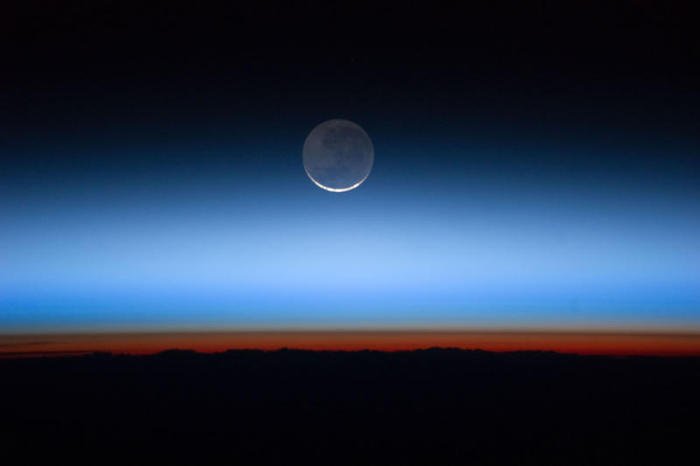The orange-red glow above the Earth’s surface is the troposphere, or lowest layer of the atmosphere. The tropopause is the brown line along the upper edge of the troposphere. Above both are the stratosphere, higher atmospheric layers, and the blackness of space. Credit: NASA Johnson Space Center
SEATTLE, Dec. 10 (UPI) -- An atmospheric peculiarity on Earth is likely common to billions of planets, a finding that may help identify potentially habitable worlds, U.S. scientists say.
While our atmosphere generally gets colder and thinner with altitude, there's a point at about 40,000 to 50,000 feet where it stops cooling and begins growing warmer, a phenomenon found not only on Earth but also on Jupiter, Saturn, Uranus and Neptune, researchers at the University of Washington reported Tuesday.
These temperature turnaround points, dubbed a "tropopause," all occur at roughly the same level in the atmosphere of each of those different worlds, at a pressure of about 0.1 bar, or about one-tenth of the air pressure at Earth's surface.
Tropopauses are probably common to billions of thick-atmosphere planets and moons throughout the galaxy, UW scientists Tyler Robinson and David Catling say.
"The explanation lies in the physics of infrared radiation," Robinson said, explain atmospheric gases gain energy by absorbing infrared light from the sunlit surface of a rocky planet or from the deeper parts of the atmosphere of a planet like Jupiter.
The physics involved provides a rule of thumb, they said, that the pressure is always about 0.1 bar at the tropopause turnaround, and should apply to the vast number of planetary atmospheres with stratospheric gases that absorb ultraviolet or visible light.
Astronomers can use the finding to extrapolate temperature and pressure conditions on the surface of distant planets and work out whether the worlds are potentially habitable, the researchers said, the key being whether pressure and temperature conditions allow liquid water on the surface of a rocky planet.
"Then we have somewhere we can start to characterize that world," Robinson said. "We know that temperatures are going to increase below the tropopause, and we have some models for how we think those temperatures increase -- so given that leg up, we can start to extrapolate downward toward the surface.
"It's neat that common physics not only explains what's going on in solar system atmospheres, but also might help with the search for life elsewhere."















